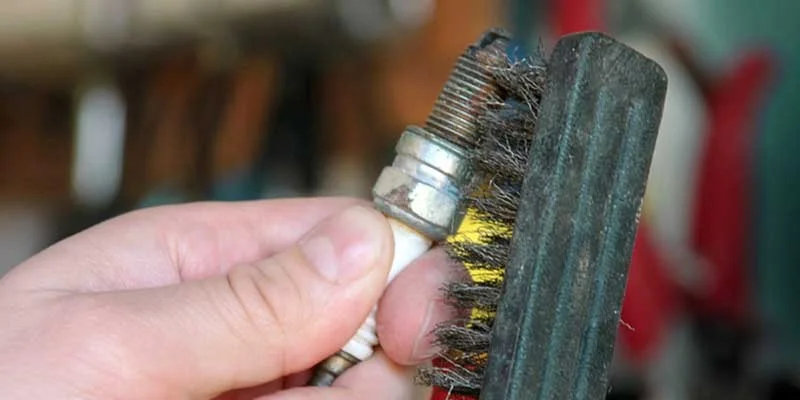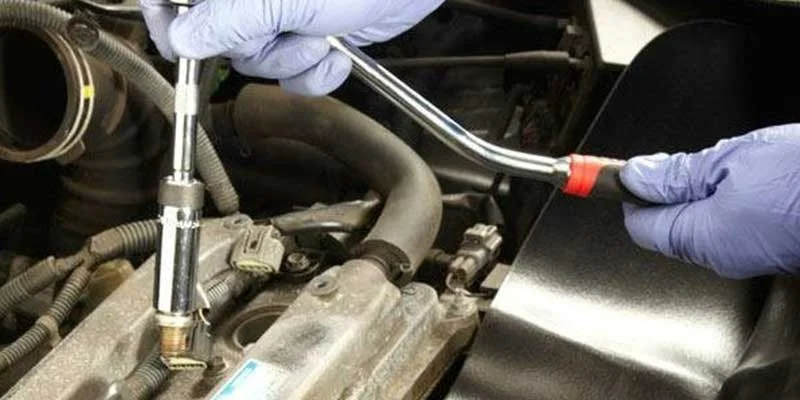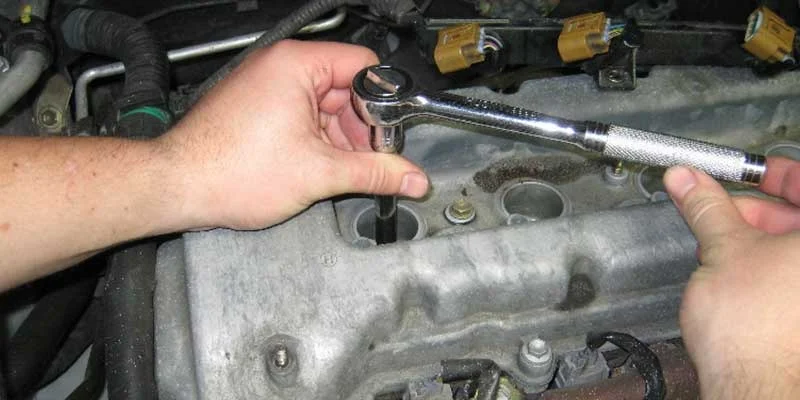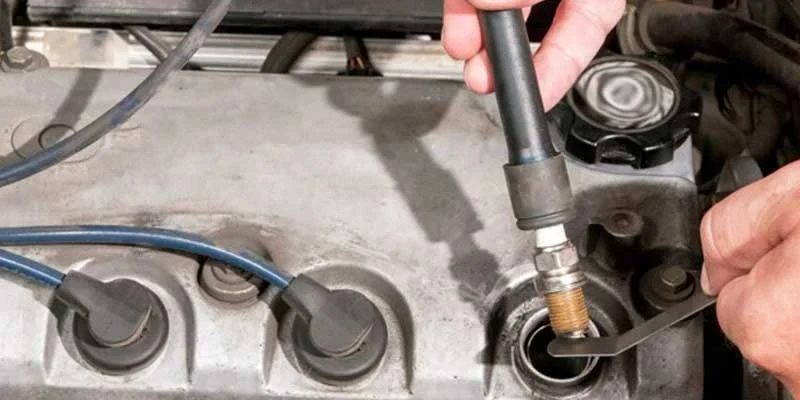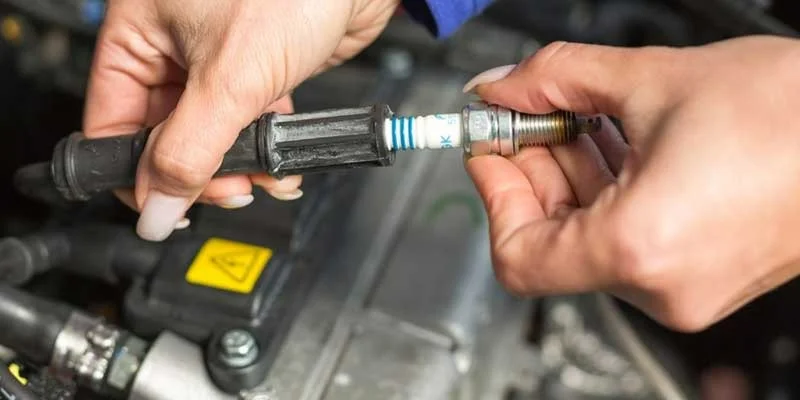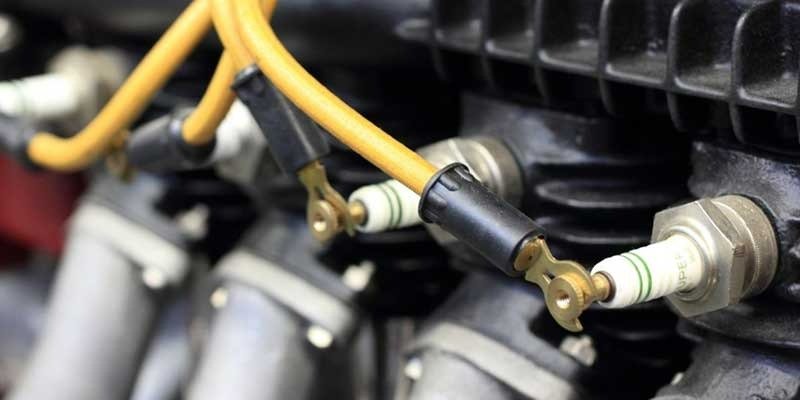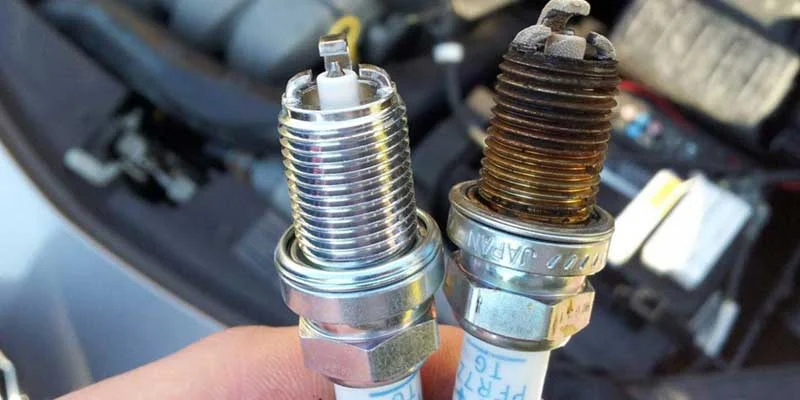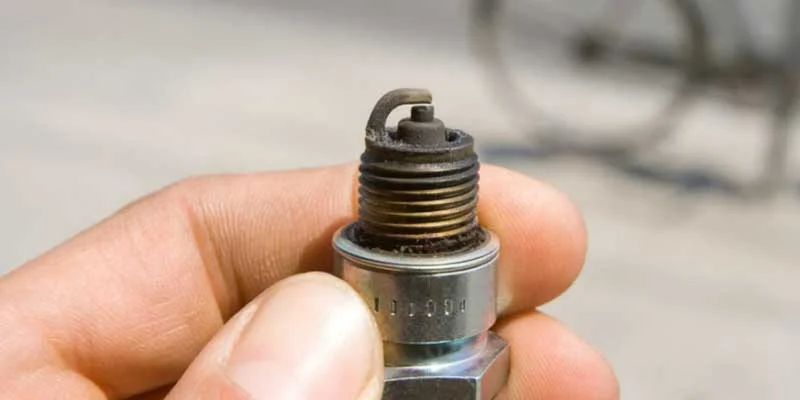“Spark Plugs are vital for the internal combustion in gasoline engines, but any damage or dirt deposition to these spark plugs can lead to serious consequences. Hence cleaning spark plugs periodically is necessary.”
It seems simple enough, but cleaning spark plugs isn’t always easy. If you don’t take care of them properly, any damage while cleaning the spark plug can cause serious consequences such as engine failure.
As we know, spark plugs are responsible for igniting the fuel mixture inside your engine. They also provide the spark needed to start the combustion cycle. But to ensure proper ignition, spark plugs require periodic maintenance. Any debris and greasing deposition over the period hinders the smooth functioning of spark plugs.
But before commencing the process of cleaning, it is essential to have access to Spark Plug.
How to Remove the Spark Plug for Cleaning?
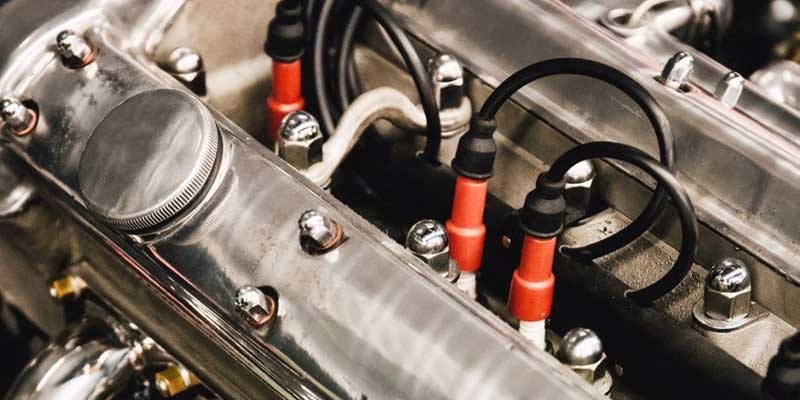
Here are the steps to remove the spark plug for cleaning:
- Start with disconnecting the negative battery terminals. You can find the battery in your engine bay. It appears like a black plastic box and has two metal terminals over them. The battery with the negative terminal is marked with a (-)minus sign.
- Lose a cable bolt that connects the cable with the terminal and put it on one side. Refer to the manufacturer manual if you cannot locate the battery terminal.
- Tucking the cable at one side prevents any undesired contact of the cable with the battery terminal.
- Locate the spark plug and its wire connecting the spark plug and cylinder in your engine. These wires usually run through the ignition coils towards the engine top.
- Each plug has a corresponding cable to its cylinder. Hence a V6 engine comes with 6 cylinders, so there will be 6 spark plugs and 6 corresponding connecting wires.
- If you are having trouble locating the spark plug, consult the user manual.
- Once you locate the spark plug, use a compressed can to remove the dust and debris around the area so that it will not fall into cylinders during spark plug removal.
- Start disconnecting the wire of the first spark plug one at a time.
- Hold the spark plug cable gently and then pull it out the spark plug. Remove the spark plug gently for cleaning.
Pro Tips
- Never remove all the spark plugs in one go. You may get confused with their reinstallation.
- Always clear the surrounding area of the spark plug before removing it to prevent the debris from entering cylinders.
- Never pull the spark plug wire too hard, which leads to damage inside the spark plug.
For a set of spark plugs, you may need to pay anything from $20 to $150, depending on the quality of spark plugs you choose. Factors such as how many cylinders your vehicle has and the quality of spark plug you are aiming it create a price differential.
How To Clean Spark Plug Tips?
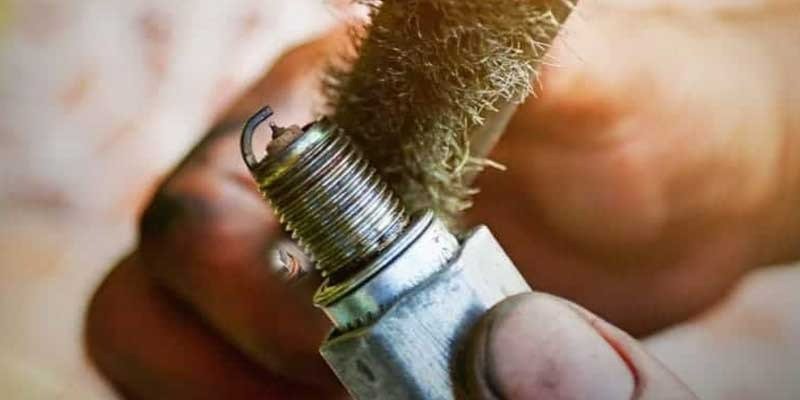
There are several different ways to clean spark plugs. You can use a wire brush, spark plug cleaner, or vinegar. Let’s explore the all 7 proven methods of cleaning spark plugs:
Method 1: Use a wire brush.
A wire brush will remove carbon from the plug and allow it to be cleaned more easily. It is primarily used to clean the threads of spark plugs and make them free from dirt and debris. It would help if you used multiple angles to clean the spark plug thoroughly. It should be used with caution, however, because it may scratch the surface of the metal.
Method 2: Use a toothbrush.
Toothbrushes are inexpensive and easy to use. They are also helpful when cleaning the threads of spark plugs. Use a toothbrush to scrub off the carbon deposits. Be careful not to get too close to the electrode tip. It could cause sparks.
Method 3: Using Spark Plug Cleaner Machine
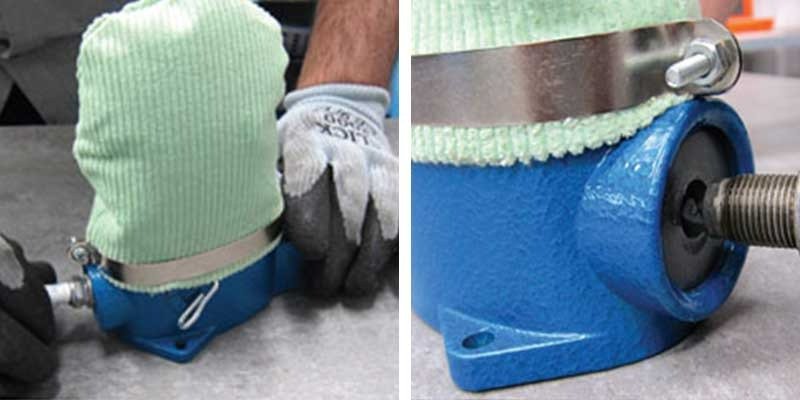
A spark Plug cleaning machine is another effective mechanism that helps with effective spark plug cleaning. As you sandblast the spark plug with a cleaner tool, compressed air cleans up the spark plug.
Once you activate the machine by switching it on, the spark plug will be plugged into the sandblasting mode. For effective cleaning, keep shaking for a smart plug to eliminate all the carbon.
Method 4: Using Carb Cleaner
It is an affordable and effective way of cleaning the spark plug. Carb cleaners, as the name suggests, are effective at cleaning the debris, dirt, grime, and other residues. Just spray the carb cleaner on the spark plug by hiding it in a vice versa position.
Method 5: Use Sandpaper On The Spark Plug Electrode
After removing the spark plug, you need to check the side inside the engine. The electrode is a small metal that extends out of the spark plug. Generally, it is prone to blackening and discoloring. Cleaning it by using sandpaper helps. Check it for any damage and replace it if required.
Pro Tip: Always use protective eyewear while using sandpaper.
If you cannot clean the carbon build-up of the extremely dirty spark plug, it’s time to change a new spark plug.
Method 6: Using Brake Cleaner

Brake cleaning is an effective solution in removing the grime from many indoor and outdoor spaces. Spray some brake cleaner on the plug and leave it aside. For stubborn stains, use the brake cleaned and wire brush simultaneously. Take a clean cloth to wipe away every bit of pain.
Method 7: Using Blow Torch
A blowtorch is a tool to heat metal by forcing air through it. You’ll need to hold the plug with pliers on the ends for the ignition coils. Maintain a firm grip but don’t squeeze it hard that can damage your spark plug. Just pull it outwards and let it sit on pliers as a handle extension.
Ignite the torch by turning the knob on your gas to flow. As the torch will light up and buries, producing the blue flames, expose the spark plug to these flames until it turns red.
All the debris and carbon will burn out as the spark is designed to withstand the extreme heat inside the engine combustion. Rotate the spark plug side by side to get wholly exposed to the torch rays, turning completely red.
Please do not touch the plug until it cools down entirely else. You may end up burning your hands.
Repeat the process for each spark plug and reinstall them back to their respective cylinders.
How To Reinstall the Spark Plug?
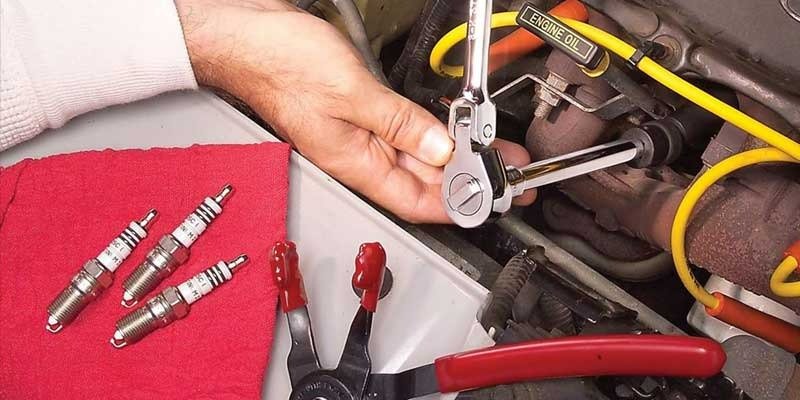
As we have explored all the effective cleaning methods, it’s time to reinstall the spark plug. Here are the essential steps for spark plug reinstallation:
- With the help of a gap tool, measure the exact gap measurements for your spark plug and electrodes. If the gap is less than prescribed in the user manual, pry the electrode further from the body to elevate the gap.
- To reduce the gap, press the electrodes closer to the body. Keep adjusting the gap until it matches the vehicle’s specification.
- Now Hold the spark plug socket along its threads facing out. Once you lower down the spark plug, the rubber grommet will hold it in place. The electrode and the threaded portion are at the same end in any spark plug. It must stick out of the spark plug socket.
- Now make the spark plug sit inside the socket and turn it clockwise. Never tighten the spark plug forcefully, as it will lead to cross-threading.
- Start tightening the spark plug by hand, and then keep screwing until it gets tightened up completely. If you find it screwing at a certain angle, unscrew it and arrange it in the socket plug again.
- Once the spark plug is tightened by hand thoroughly, take the help of a socket wrench to secure it fully into its seat. Avoid applying excessive force as otherwise, it may break inside the engine.
- Now reconnect the spark plug wire. Hold the wire near the boot and press it down the exposed end of the spark plug, which is visible from the engine.
- There is an audible popping sound once the spark plug wire connects appropriately. The wire may not sit down in the first go, but twisting it right and left helps pop it into the desired place.
If you cannot hear any click or pop, it indicates that the spark plug wire has not been connected.
Frequently Asked Questions
Can I Clean and reuse the Spark Plug?
Yes, you can clean the spark plug and reuse it if it is not damaged or faulty. All the methods suggested above help thoroughly clean the spark plug to restore its efficiency. But if the spark plug is already damaged or damaged in uninstallation, cleaning, or reinstallation, do not hesitate to buy the new spark plug.
Can I Use WD-40 to clean Spark Plugs?
Water Displacement – 40 (WD-40) is used to clean the carbon from the spark plugs and block the moisture. Especially if the spark plugs are wet and you aim to remove the moisture from ignition distributors, WD-40 does the trick.
Can I Use Vinegar to Clean Spark Plugs?
Soaking the spark plug in vinegar and petrol helps remove accumulated carbon deposits. You can clean them using a wire brush and then leave them in the vinegar solution for 10 minutes.
Can I Clean Sparkplug with Gasoline?
WD-40 or gasoline are considered suitable for removing carbon and clearing debris.
Conclusion:
Spark plugs are an essential part of the internal combustion engine. They provide the source of ignition and power to start the engine. So they should be cleaned regularly to maintain their performance. A dirty or defective spark plug can significantly affect your engine.

My Name is Christopher Angels, and I am a postgraduate in mechanical engineering. Cars have always excited me as a child, and soon I decided to dive into the world of cars by pursuing mechanical engineering. I also worked as a Mechanic for over 3 years to understand Cars’ anatomy and how each part contributes to its working.
My Name is Christopher Angels, and I am a postgraduate in mechanical engineering. Cars have always excited me as a child, and soon I decided to dive into the world of cars by pursuing mechanical engineering. I also worked as a Mechanic for over 3 years to understand Cars' anatomy and how each part contributes to its working.

